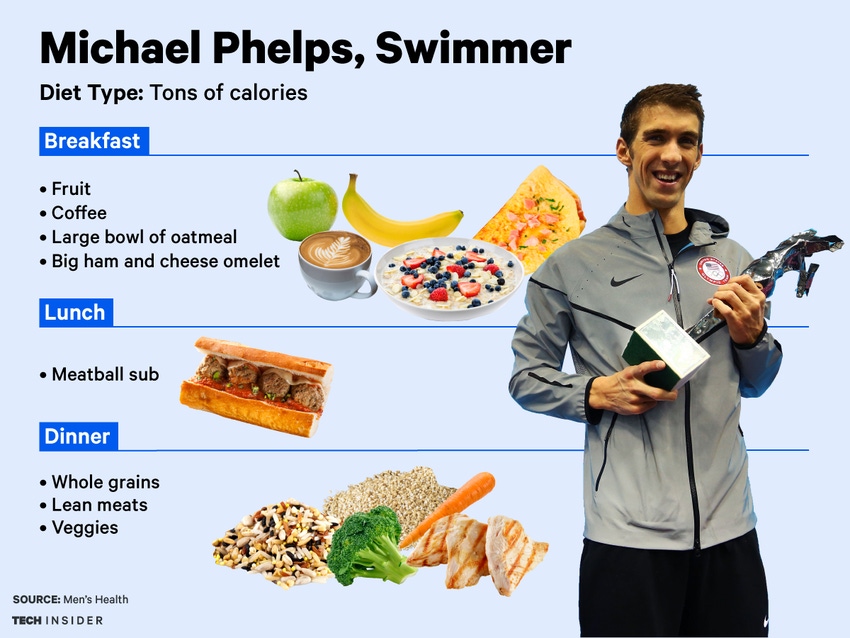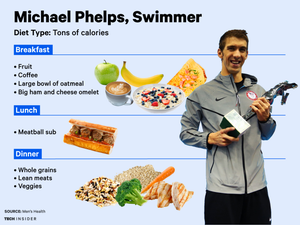August 10, 2016

Families around the world are tuning in to watch their nation’s athletes compete at the 2016 Olympics in Rio, Brazil. Whether it’s gymnastics, fencing, shooting, cycling or swimming, it’s hard not to wonder what these athletes must do to chisel their bodies to perfect their sport and compete at the highest level.
USA Team swimmer Michael Phelps is the most decorated Olympian of all time, so of course, people are particularly interested in his secrets to success. Before the 2008 Beijing Olympics, Phelps famously talked about his 12,000 calorie-per-day meal plan, which consisted of foods like chocolate-chip pancakes, pasta, energy drinks and whole pizzas.
Swimming for five or six hours each day certainly burns a lot of calories, but Phelps has tamed down his diet while training for the 2012 and 2016 games, cutting down on some of the processed carbs and adding more protein to his diet.

Photo Credit: Men's Health http://www.menshealth.com/fitness/the-new-michael-phelps-diet
In 2012, Phelps told Men’s Health, “My main goal used to be to just eat a ton of calories. But over the years, I’ve adjusted my diet. Now I’m eating less, but I’m getting my calories from nutrient- and protein-dense foods.”
According to Wendy Potter for Foods4BetterHealth.com, “Phelps only eats what he feels his body needs, mostly lean grilled proteins such as hamburgers, hot dogs, steak, and chicken, as well as salads. His roommate and fellow Olympic champion Alison Schmitt sometimes makes a salad with grilled asparagus, cucumber and tomato as a side to the grilled protein.
Phelps said, “I used to think that healthy meant that it wouldn’t taste good. It’s like putting higher octane fuel in a car — I run better when I eat better.”
In an article featured on iNews.com, fellow Team USA swimmer Ryan Lochte eats six eggs every morning paired with hash browns, spinach, tomatoes, ham, pancakes, oatmeal, coffee and fruit. Team USA rower Seth Weil eats carne asado tacos. Team Great Britain diver Tom Daley told Men’s Health that he drinks a dairy-rich milkshake after his evening workouts as a recovery meal.
One thing in common I see with all of these athletes is animal proteins and fats. While the portion sizes might be greater in Olympic athletes, it’s clear that meat and dairy can help both Olympians and regular folks like you and me fuel our bodies, maintain or build muscle mass and recover after a full day of work.
The opinions of Amanda Radke are not necessarily those of beefmagazine.com or Penton Agriculture.
You might also like:
Do small cows make more money?
13 utility tractors that will boost efficiency
How to get more value from your cull cows
14 thoughts to help get those heifers bred
Photo Tour: World's largest vertically integrated cattle operation
You May Also Like



